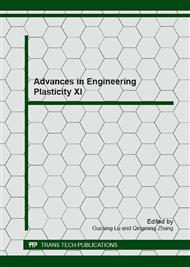p.514
p.518
p.522
p.526
p.530
p.534
p.539
p.543
p.547
Preliminary Study of Sandwich Panel with Rotational Friction Hinge Device against Blast Loadings
Abstract:
Blast-resistant structures, such as blast door panel, are designed and fabricated in a solid way to resist blast loads. This not only increases the material and construction costs, but also undermines the operational performance of the protective structures. To overcome these problems, many researchers try to use high-strength materials and different structural forms in structural design to resist the blast and impact loads. This study introduces a new configuration of sandwich door panel equipped with rotational friction hinge device with spring (RFHDS) to resist blast loading. The RFHDS can help the panel equipped with RFHDS to recover, at least partially its original configuration after blast loading and maintain its operational and blast-resistance capability after a blast event. The energy absorption and blast loading resistance capacities of this proposed sandwich panel are numerically investigated by using finite element code Ls-Dyna. It is found that the proposed sandwich door panel with RFHDS can improve the blast-resistant capacity significantly. This new configuration of sandwich door panel can be employed to mitigate blast loading effects in structural panel design.
Info:
Periodical:
Pages:
530-533
Citation:
Online since:
January 2013
Authors:
Price:
Сopyright:
© 2013 Trans Tech Publications Ltd. All Rights Reserved
Share:
Citation:


